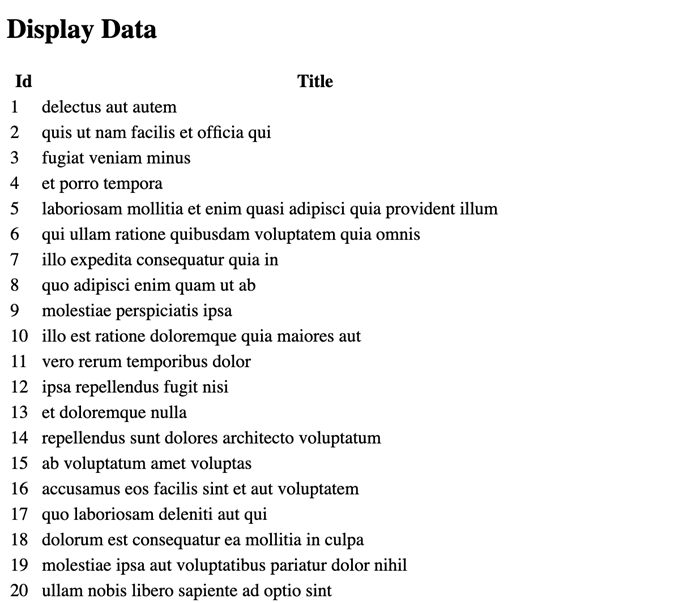Fetch API 提供了一个接口,用于异步管理进出 Web 服务器的请求和响应。它提供了一个 fetch() 方法来异步获取资源或将请求发送到服务器,而无需刷新网页。使用 fetch() 方法,我们可以执行各种请求,如 POST、GET、PUT 和 DELETE。在本文中,我们将学习如何使用 Fetch API 发送 GET 请求。
发送 GET 请求
GET 请求是用于从给定资源或 Web 服务器检索数据的 HTTP 请求。在 Fetch API 中,我们可以通过在 fetch() 函数中指定方法类型或不在 fetch() 函数中指定任何方法类型来使用 GET 请求。
语法
在 fetch() 函数中,我们在方法类型中指定 GET 请求。
或
在这里,在 fetch() 函数中,我们没有指定任何方法类型,因为默认情况下 fetch() 函数使用 GET 请求。
例在下面的程序中,我们将从给定的 URL 中检索 id 和 titles 并将其显示在表中。因此,为此,我们定义了一个 fetch() 函数,其中包含一个 URL,我们从中检索数据和一个 GET 请求。此函数将从给定的 URL 中检索数据,然后使用 response.json() 函数将数据转换为 JSON 格式。之后,我们将在表中显示检索到的数据,即 id 和 title。
输出
 结论
结论
这就是我们如何使用 Fetch API 发送 GET 请求,以便我们可以从给定的 URL 请求特定的资源或文档。使用 fetch() 函数,我们还可以根据我们的要求自定义 GET 请求。现在在下一篇文章中,我们将学习如何发送 POST 请求。



